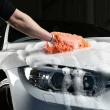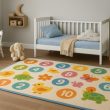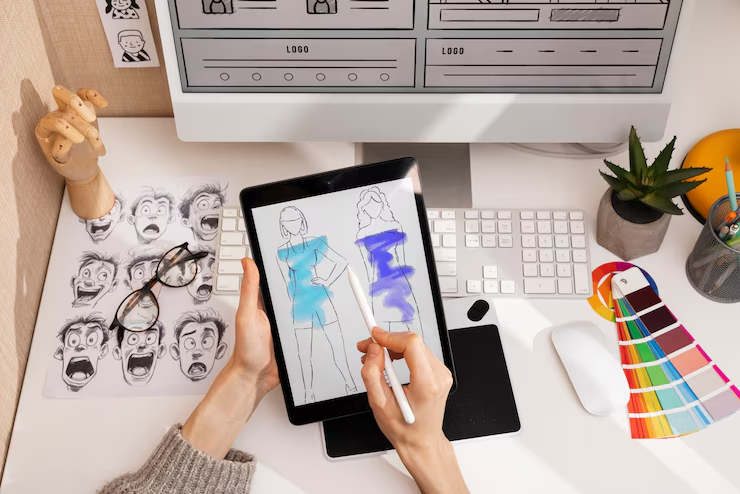In the dynamic world of animation, especially in 3D animation, storytelling plays a pivotal role in creating engaging and impactful visual content. However, before characters move, environments come to life, or scenes transition seamlessly, there is an essential phase that sets the tone for everything to follow—storyboarding.
Whether you’re working on medical animation services, legal animation services, or creating stunning visuals for product marketing, storyboarding acts as the foundation. It’s the blueprint that guides animators, designers, and production teams through the creative journey.
In this blog, we’ll dive deep into the importance of storyboarding in 3D animation projects, explore how it influences production, and discuss its applications across industries. Plus, we’ll show you how to get started with 3D animation video production the right way, starting with a solid storyboard.
What Is Storyboarding in 3D Animation?
Storyboarding is the visual planning stage of an animation or video project. It involves creating a series of drawings, sketches, or digital images that represent the sequence of scenes in a narrative. Each frame illustrates character positions, camera angles, movement direction, and sometimes even dialogue or sound cues.
In 3D animation, storyboards help define complex camera movements, spatial relations, and transitions, making them crucial for organizing visual storytelling in three-dimensional space.
Why Is Storyboarding Crucial in 3D Animation?
1. Clarifies the Vision
Storyboarding allows clients and team members to visualize the final product early in the production process. This is especially useful for projects involving 3d modeling services, where understanding object positioning, texture planning, and animation flow is crucial.
2. Saves Time and Resources
Correcting mistakes in post-production can be costly. A well-thought-out storyboard reduces the risk of rework by ironing out creative and logistical challenges beforehand.
3. Aligns Creative and Technical Teams
Storyboards serve as a common reference point for scriptwriters, designers, animators, and directors. This ensures that all parties are aligned and understand the project’s trajectory.
The Role of Storyboarding in Different 3D Animation Projects
Let’s examine how storyboarding functions across various applications of 3D animation.
A. Medical Animation Services
When it comes to medical animation services, precision and clarity are vital. Storyboards help plan how complex medical processes—like surgeries or biochemical mechanisms—are visualized.
-
Use Case: A storyboard for a cardiology animation might show how blood flows through the heart in each frame.
-
Benefit: Ensures medical accuracy and effective communication of complex procedures.
B. Product Advertising and Marketing
In commercial contexts, especially when illustrating product advertisement examples, storyboarding helps communicate product features and brand messaging effectively.
-
Use Case: A storyboard for a smartwatch might illustrate how it looks from different angles, its screen interface, and its fitness tracking features.
-
Benefit: Enhances audience understanding of product value, making the animation more persuasive.
C. Legal Animation Services
In legal animation services, storyboards help lawyers and forensic experts depict scenarios accurately for use in courtrooms.
-
Use Case: Reconstructing a car accident step-by-step using camera angles, object distances, and timings.
-
Benefit: Helps legal teams validate arguments with visual evidence.
D. Industrial and Engineering Applications
Many animation production companies use storyboards in industrial design animations, where they must visualize mechanical movements or manufacturing processes.
-
Use Case: Animating a robotic assembly line.
-
Benefit: Helps stakeholders foresee potential mechanical issues or inefficiencies before actual implementation.
Key Components of a 3D Animation Storyboard
To get started with 3D animation video production, here’s what a standard storyboard should include:
-
Scene Number and Description
-
Provides reference and quick understanding of the scene context.
-
-
Visual Thumbnails
-
Rough sketches or digital illustrations showing key visual elements and framing.
-
-
Camera Angles and Movements
-
Notes about pans, zooms, tracking, and transitions.
-
-
Character Actions and Expressions
-
Details about what characters are doing or how they feel.
-
-
Dialogue and Audio Cues
-
Speech, sound effects, and music instructions.
-
-
Timing and Duration
-
How long each scene should last, aiding animation pacing.
-
How Storyboarding Integrates with 3D Modeling Services
A successful 3D animation relies on seamless collaboration between storyboarding and 3d modeling services. Here’s how they connect:
-
Asset Planning: The storyboard outlines the objects and characters that need to be modeled.
-
Scene Composition: Determines where each 3D model will be placed in a scene.
-
Animation Workflow: Guides animators on when and how models interact or move.
For instance, in a car commercial animation, the storyboard may define how a vehicle transitions from one terrain to another. This input is then shared with 3D modelers to create terrain textures, lighting conditions, and car dynamics accordingly.
Tools for Storyboarding in 3D Animation
Modern animation production companies utilize a mix of traditional and digital tools for creating storyboards:
Traditional Tools:
-
Pencil and paper
-
Sticky notes or index cards
-
Whiteboards for scene flow
Digital Tools:
-
Storyboarder by Wonder Unit – Easy-to-use open-source tool.
-
Toon Boom Storyboard Pro – Industry-standard for professional productions.
-
Adobe Photoshop/Illustrator – For high-fidelity panels.
-
Blender (Grease Pencil) – Allows integration with actual 3D modeling.
By choosing the right toolset, studios can streamline the transition from storyboard to full-scale production.
Examples: From Storyboard to Final Animation
Let’s explore how some product advertisement examples transition from storyboard to finished video.
Example 1: 3D Smartphone Ad
-
Storyboard: Includes scenes where the phone spins, the screen lights up, and features are highlighted via pop-up icons.
-
Final Animation: Shows dynamic 3D motion, with glowing transitions and a sleek background, exactly as planned.
Example 2: Pharmaceutical Explainer
-
Storyboard: Illustrates how a pill dissolves in the stomach and releases medicine.
-
Final Animation: Delivers a hyper-realistic walkthrough of the digestive system with detailed 3D modeling.
Example 3: Courtroom Demonstration
-
Storyboard: Frames show pedestrian movement, vehicle speed, and impact angle.
-
Final Animation: Presented in court as a 3D recreation to support witness testimony.
Tips to Get Started with 3D Animation Video Production Using Storyboarding
1. Start with the Script
The storyboard reflects the script’s tone, pacing, and structure. Begin with a solid written narrative.
2. Sketch Rough Ideas First
You don’t need artistic perfection. Simple stick figures or shapes can get your idea across in early drafts.
3. Involve Stakeholders Early
Whether it’s a legal consultant, a marketing executive, or a medical expert, get feedback at the storyboard stage.
4. Use Animatics
Transform your storyboard into an animatic—a rough animation of storyboard frames with sound. This bridges the gap between planning and full production.
5. Collaborate with Professional Studios
Many animation production companies offer pre-production services including storyboarding. Partnering with them ensures professional input at every step.
Storyboarding: A Critical Step for All Industries
Whether you’re promoting a product, educating medical professionals, or presenting a legal case, storyboarding ensures that your 3D animation project starts off on the right foot.
Here’s How Storyboarding Benefits Different Sectors:
| Industry | Use of Storyboarding | Benefits |
|---|---|---|
| Medical | Procedure visualization | Medical accuracy, educational value |
| Marketing | Product feature showcase | Customer engagement, clear messaging |
| Legal | Incident reconstruction | Courtroom clarity, persuasive visuals |
| Engineering | Design simulation | Error prevention, process efficiency |
Conclusion
In the intricate process of 3D animation, storyboarding is the invisible yet indispensable element that holds everything together. From conceptualization to final rendering, it guides the animation journey with precision and creativity.
If you’re looking to get started with 3D animation video production, never underestimate the power of a strong storyboard. Whether you’re crafting realistic simulations with 3d modeling services, educating patients through medical animation services, creating compelling product advertisement examples, or working with legal animation services, a well-structured storyboard will always serve as your north star.
For optimal results, consider partnering with experienced animation production companies that understand how to turn a simple sketch into a stunning 3D experience.











